Adam's Heart Valve Surgery Blog – Page 79
Is Intel… I mean St. Jude Inside You?
By Adam Pick on November 16, 2007
As some of you may know, I am a high technology analyst for a leading firm here in Los Angeles. I am also a former, double heart valve replacement patient with a personal mission to help future patients and caregivers.
That said, there is some (albeit small but significant) overlap between these two roles in my life.
For example, are you familiar with the “Intel Inside” marketing strategy of the early 1990’s? At the time, Intel was a vague semiconductor brand that powered the world’s business and personal computers with its central processing unit (CPU). Back then, buyers were typically aware of brands like Hewlett Packard, Compaq and IBM, but they didn’t really pay attention to the CPU that powered their desktop computer.
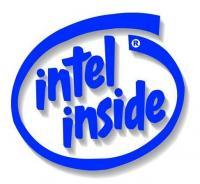
Video Spotlight: Mitral Valve Replacement Video By Michael Petracek, MD
By Adam Pick on November 16, 2007
Alright everybody…
You know what time it is…
Yep. You guessed it. It’s time to update the “Heart Valve Surgery Video Of The Week”.
This week we’re going to do something completely different than all of the heart surgery videos that we featured in the past. Today, we are going to show an entire video that focuses on minimally invasive, heart valve replacement surgery. The video is about one hour long.
In this video, Dr. Michael R. Petracek of the Saint Thomas Heart Institute in Nashville, Tennesse is going to perform a minimally invasive mitral valve replacement under direct vision through a right thoracotomy.
It’s interesting to note that Dr. Michael Petracek’s procedure is done without a cross clamp under cold fibrilation through a 2-inch incision which is reported to minimize heart valve surgery complications.
To watch the video simply press the “Play” button in the mini-video screen in the right browser.
Keep on tickin!
Adam
Chest Xray Of Mechanical Valve & Sternum Wires
By Adam Pick on November 16, 2007
So I’m surfing the Internet last night when I come across Michael C’s blog, “The Wonderful World Of Nothing Worthwhile”. Great name for a blog, right?
Anyways, it turns out there is something very worthwhile at this blog. Michael is a former heart valve replacement patient. He had mechanical valve replacement surgery just recently.
Like many patients, Michael was curious to see what his chest (heart valves and sternum wires) looked like under xray after surgery. Unlike many patients, however, Michael actually did something about it.
Here is Michael C’s show and tell (including an actual xray picture of his embedded, artificial heart valve and sternum wires)…
A Husband’s Perspective On Heart Valve Surgery Recovery
By Adam Pick on November 12, 2007
Every once in a while I receive an email that is either overwhelmingly touching or incredibly insightful. In those situations I ask my readers if I can publish their quotes / stories in my blog. Luckily, 99% of the time they say “yes”.
I have to admit…
These stories are the epicenter of why I wrote my book and why I continue to write this blog… I know this information will help somebody, somewhere, someday. Maybe it will help you right now?
Recently, I received a note from a reader (his name is Taylor) about his wife of 55 years (Phille). Phille just had significant heart surgery. Typically, the stories come to me directly from the patient. However, many stories come from their caregivers. Taylor is the husband and primary caregiver in this case.
TAYLOR’S EMAIL TO ME:
Adam,
Sorry about being so long getting back to you, but you know how it is…
Phille had the surgery on Monday 10/15/07.
Edwards Lifesciences Doubles Heart Valve Replacement Donation Fund
By Adam Pick on November 12, 2007
This is really great news…
More than twenty Orange County, California organizations and hospitals will share in nearly $245,000 in grants this year from The Edwards Lifesciences Fund.
The Edwards Lifesciences Fund, the charitable arm of Irvine heart valve maker Edwards Lifesciences Corp., announced today that it would donate more than $2.5 million to 60 charitable organizations worldwide as part of its third annual grant cycle. That is more than twice the amount it gave away last year.

“Arigato” Tokyo For The Sushi… Ready To Blog Again!
By Adam Pick on November 12, 2007
Konichiwa!
After eight very busy days in Tokyo, I am back in Los Angeles.
I have to admit, Tokyo is one impressive city.
Great trains, great clients and unbelievable sushi!!!
So you know, I’m a sushi addict.
I’ll never forget the first sushi bar I went to in Tokyo. I ordered tuna and the waiter responded with, “How fatty do you want your tuna?” That was a great sign I was in the right place for the freshest raw fish on the planet.
I even made it to the famous Japanese Fish Market – the Tsukiji Fish Market – with two of my colleagues. We got up at 5am and then headed down to the docks. One hour later, we were eating sushi right alongside the fish auctions. It was pretty incredible to see all the tuna auctions in the wholesale market.
Anyways, now I’m back with my bride, Robyn, and checking emails. Lots of news about heart valve surgery, heart valve replacement and heart valve repair during the past few days. I’ll be uploading some blogs shortly.
Arigato!
Adam
Running After Heart Valve Surgery
Written By: Adam Pick, Patient Advocate, Author & Website Founder
Published: May 6, 2025
In my humble opinion, developing recovery milestones is a critical, often over-looked, element of heart valve surgery recovery. As patients heal following surgery, many experience perceived or actual heart valve complications. To learn more about complications post-op, click here.
That said, recovery milestones are tangible signs of progress which counter a lurking thought that most patients feel at some point during recovery. That thought is, “I think something is wrong!” Personally, I developed a series of recovery milestones that I wrote about in a prior blog. So you know, I keep developing these recovery benchmarks even though I had my double heart valve replacement twenty-three months ago.
I am happy to report that I achieved another milestone earlier today. As some of you know, I am currently in Tokyo on a business trip. I awoke to a beautiful day here in Japan – clear skies with the temperature in the high 60’s. I couldn’t resist… I decided it was time to go for a run before my morning meetings. However, this time, I decided to leave my heart rate monitor behind.
What Is The Life Expectancy After Heart Valve Replacement Surgery?
By Adam Pick on November 5, 2007
I’m on day three of my work trip through Japan. So far, Tokyo is very impressive and… very crowded! I almost had a panic attack walking through the train stations this morning. So many people! I’ve since learned that Tokyo is one of the most populated cities in the world, with a population over 12 million.
Needless to say, the jet lag is still overwhelming considering I live in Los Angeles. That said, I’ve had some extra, early morning hours to dig through my inbox and answer some questions. I just received an interesting question about life expectancy after heart surgery. It reads, “Adam – Do you know what the life expectancy is for patients after heart valve surgery?”
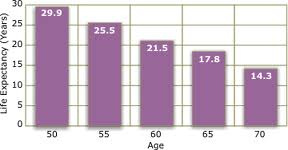
Heart Valve Replacement Manufacturers – Who Are They?
Written By: Adam Pick, Patient Advocate, Author & Website Founder
Page Last Updated: May 10, 2025
A great topic… Heart Valve Manufacturers.
They design, develop and manufacture the little gizmos that replicate the functioning of our own tissue heart valves.
However, often times, patients know very little about the manufacturers of mechanical or biological heart valve replacement devices. That said, the question of “Who are the top heart valve manufacturers?” is a great one.
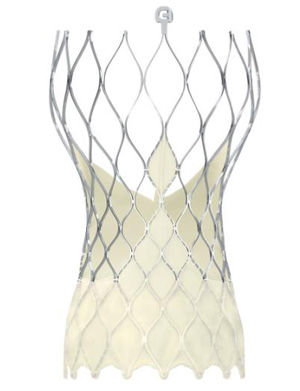
Can A Patient Be Awake During Heart Surgery? Bypass? Valve Surgery?
By Adam Pick on November 5, 2007
This was news to me…
Did you know that patients can be awake during a heart bypass operation?
I had no idea this was possible until I just saw an incredible video on Youtube.com about patients being awake during cardiac surgery.
In India, several cardiac surgeons are pioneering heart valve operations (including valve repair and valve replacement) in which the patient is awake. No general anesthetic is used throughout the entire procedure.
I’m still a little amazed.
Keep on tickin!
Adam
What Are The Heart Valve Replacement Surgery Risks?
By Adam Pick on November 4, 2007
There are a lots and lots of questions that race through a patient’s mind when he or she is diagnosed as “needing heart valve replacement surgery”.
However, one of the most common questions I receive when talking with patients and their caregivers about heart valve surgery is… “What are my valve replacement surgery risks?”
It’s an interesting question. I know it well. I’ll never forget when I was diagnosed. That question was re-phrased in my mind and sounded more like, “Oh my god! Open heart surgery? Am I going to die?” (I’m guessing you can relate to that thought.)
However you chose to phrase the question, that IS NOT what makes the question interesting.
Nope… Not at all.
What makes that question interesting is the fact that there is risk if you have the surgery AND there is risk if you don’t have valve replacement surgery. In fact, you have “risk” every second of your life – from the moment you wake up to the moment you go to sleep. To learn more about valve replacement surgery, click here.
Think about it! Do you think driving in a car is completely safe, without risk? Think again! I live in Los Angeles. The drivers are crazy in that city. Once a week I yell out to someone, “What are you trying to kill me?”
That said, valve replacement surgery risks are quite small. The unfortunate truth is that some patients do not make it through the heart surgery. However, it is a very small percentage.
During my research for the book, The Patient’s Guide To Heart Valve Surgery, I learned that the mortality rate for heart valve surgery is only 2.4%. And, thanks to medical technology, the mortality rate continues to improve.
I hope that helps calm some of your fears about valve replacement surgery risks.
Keep on tickin!
Adam
After Heart Surgery, It’s Sushi Time In Tokyo, Japan
By Adam Pick on November 3, 2007
Konichiwa!!
Twenty three months after double heart valve surgery, I find myself in Tokyo, Japan for a week of work. (I’m speaking at a conference here.)
Luckily, I have today (Sunday) to wander through the city. The weather couldn’t be any better – high 60’s and no clouds.
I just went on a long walk through the Hama-rikyu Gardens (pictured above) and I’m getting ready for a stroll down the Ginza district.
Needless to say, I have already had my first fill of sushi. As soon as I got to my hotel, I dropped my bags in the room and darted to the closest sushi bar. Yum! Yum! Yum!
The salmon, tuna, and yellowtail was so fresh. Plus, I really like how they prepare their wasabe. Yes. I’m going for more tonight!
Keep on tickin!
Adam
Broken Sternum Recovery… And, The Pain
Written By: Adam Pick, Patient Advocate, Author & Website Founder
Published: May 14, 2025
I approach this topic with delicate care.
“Why?” you may be wondering.
Well…. Let me explain.
It is one thing to realize you need heart surgery.
It is another thing to realize you need to have your sternum broken in the process. That said, heart valve surgery is somewhat of a double whammy.
Yes. There is anesthesia.
Yes. There is pain medication.
Yes. There are medical facts which suggest that you will live longer after heart valve surgery.
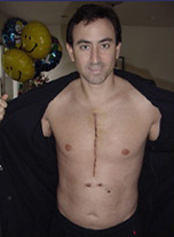
Heart Valve Size – How Big Is A Heart Valve?
Written By: Adam Pick, Patient Advocate, Author & Website Founder
Page Last Updated: May 11, 2025
I just received a fantastic question. The question reads, “Adam… Do you know how big our heart valves are?”
The interesting thing… In all my research about heart valves… In all my interviews with patients, nurses, cardiologists and surgeons, I have never specifically found a specific answer to that question.
“Why?” you may be thinking to yourself.
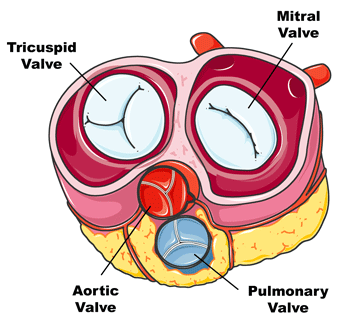
Tricuspid Regurgitation – Symptoms, Surgery & More
By Adam Pick on October 31, 2007
As many of you know, I had double heart valve replacement due to a very leaky aortic valve that suffered from from calcified aortic leaflets. My problematic valve was a bicuspid aortic valve (that was both stenotic and had regurgitaiton).
I knew about my defective valve since the time I was 5 years old. That said, my condition was considered a congenital heart condition and I had a heart murmur for the first 33 years of my life.
I say “had” because, since my surgery a few years ago, I no longer have a heart murmur or any leaking heart valve symptoms.
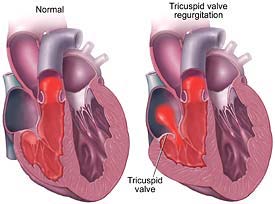
When Was The First Heart Surgery?
By Adam Pick on October 29, 2007
Have you ever wondered when the first heart surgery was performed?
Hmmmmm….
Well, I couldn’t resist the opportunity to learn more about cardiac surgery history so I Google’d the term, “first heart surgery”. Guess what? I immediately found a reference to the first heart surgery. Here is what Wikipedia had to say about the first heart surgery:
“The first heart surgery on the heart itself, performed without any heart surgery complications, was by Dr. Ludwig Rehn of Frankfurt, Germany, who repaired a stab wound to the right ventricle on September 7, 1896.”
Pretty amazing to think that the first heart surgery happened over 100 years ago.
As I can attest, following my double heart valve replacement surgery, patients today are blessed to have pioneers like Dr. Ludwing Rehn of Germany as part of our cardiac surgery history.
Keep on tickin!
Adam
How Do Sternum (Sternal) Wires Work During Heart Surgery?
Written By: Adam Pick, Patient Advocate, Author & Website Founder
Page Last Updated: May 12, 2025
Although minimally-invasive procedures are becoming more prevalent in the heart valve surgery community, open heart surgery via a broken sternum is still performed in most cases involving heart valve repair and heart valve replacement surgery.
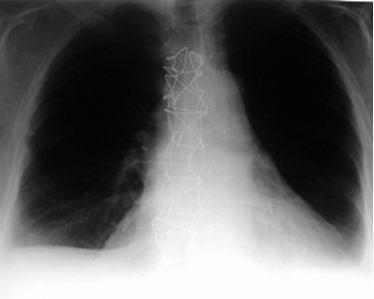
That said, the sternum is “cracked” through a medical procedure known as a median sternotomy procedure. To learn more, click here.
Yes, I know… The sound of that for a patient or a caregiver is tough to contemplate. I remember asking my cardiologist, “Ya ya ya ya mean that you’re going to crack my chest?” (That was a purposeful stutter intended to create drama by the way.)
Once you get over the fear, the reality sets. You think to yourself as you rub your chest, “OMG! My sternum is going to be split! My surgeon is going to saw through my breast bone!”
Then comes the ultimate question, “How the heck are you going to keep my chest plate together once you fix my heart?”
What Is A Heart Valve Infection?
By Adam Pick on October 29, 2007
A great question just came in about heart valve disease, specifically a heart valve infection. The email reads, “Adam, what is a heart valve infection? What are heart valve infection symptoms?”
As you may be aware, there are several different types of heart valve disease which can damage the heart valves and result in heart valve repair and/or heart valve replacement. I was born with a bicuspid aortic valve that suffered from aortic stenosis and regurgitation. This led to my Ross Procedure (aortic valve replacement) a few years back. To learn about that operation, click here.
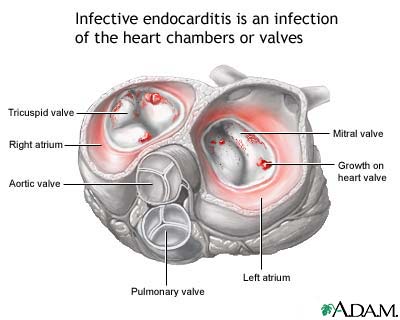
What About Heart Valve Surgery In India?
By Adam Pick on October 28, 2007
As many of you know, I had my heart surgery in Los Angeles, California at USC Medical Center by Dr. Vaughn Starnes. I believe I was fortunate for two reasons.
- First, I found a great surgeon.
- Secondly, I had excellent insurance. The costs of heart surgery can be very expensive. Even with my insurance, there were a number of out-of-pocket costs that were not trivial relative to my income.
For these reasons, I have learned of many patients traveling to India heart surgery centers to minimize the costs of their heart valve repair or heart valve replacement surgeries. India heart surgery is not new by any means. However, the outsourcing of heart surgery to India from foreign regions is a relatively newer alternative to minimize patient healthcare costs of medical systems in regions like the United States.
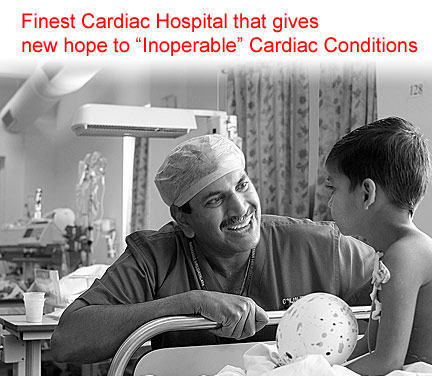
Help! Where Is My Tricuspid Heart Valve?
By Adam Pick on October 26, 2007
The email reads, “Adam – I was just diagnosed with severe tricuspid regurgitation. I feel stupid asking this but where exactly is my tricuspid valve in my heart. The doctor showed me a fake, plastic heart but I can’t remember right now. Please help!”
Don’t worry. I totally understand. Honestly, when I was diagnosed with severe aortic stenosis and regurgitation I was so shocked I don’t remember much of what my cardiologist told me besides, “You need open heart surgery!” That’s a tough one to forget.
Anyways, here is a human heart diagram that shows the various valves of the heart – aortic, pulmonary, mitral and the tricuspid.

I hope this helps you better understand where your tricuspid heart valve is.
Keep on tickin!
Adam






